Hard Floor Cleaning in Spring Cleaning
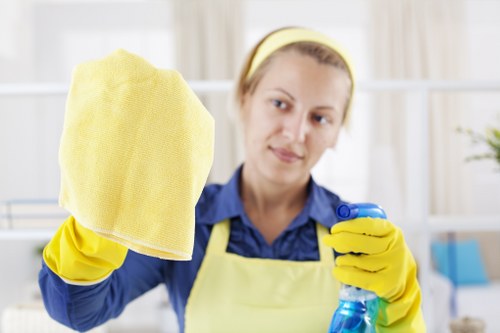
Spring is the perfect time to refresh your home, and one of the most important tasks is hard floor cleaning. Over the winter months, floors can accumulate dust, dirt, and grime, making a thorough cleaning essential for both aesthetic and health reasons. Whether you have hardwood, tile, laminate, or vinyl floors, proper cleaning techniques can extend their lifespan and maintain their beauty.
Embarking on a spring cleaning journey involves more than just sweeping and mopping. It requires attention to detail and the right tools to tackle different types of hard flooring. In this comprehensive guide, we will explore various strategies and tips to ensure your hard floors look pristine this spring.
Regular maintenance and deep cleaning can prevent scratches, stains, and other damage. By dedicating time to clean your hard floors thoroughly, you not only enhance the look of your home but also create a healthier living environment. Let’s dive into the best practices for hard floor cleaning during your spring cleaning routine.
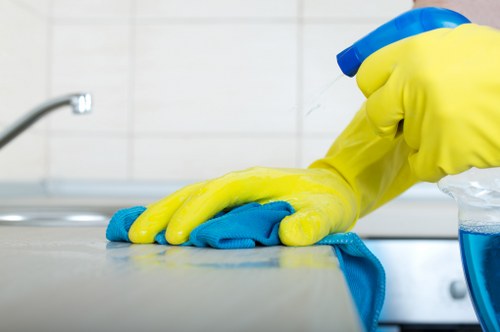
Why Spring Cleaning is Important for Your Hard Floors
Spring cleaning goes beyond routine housekeeping. It involves a deep and systematic approach to cleansing, which is particularly beneficial for hard floors. Floors are a central element of any home, often overlooked during regular cleaning sessions. However, during spring, it's crucial to give them the attention they deserve to remove embedded dirt and revive their natural shine.
Hard floors can harbor allergens like dust mites and pet dander, which can accumulate over time and affect indoor air quality. A thorough spring cleaning helps eliminate these particles, contributing to a healthier home environment. Additionally, removing built-up grime can prevent wear and tear, extending the life of your flooring materials.
Moreover, spring cleaning offers an opportunity to assess the condition of your floors. Identifying scratches, dents, or other damages early allows for timely repairs, ensuring your floors remain in excellent condition year-round.
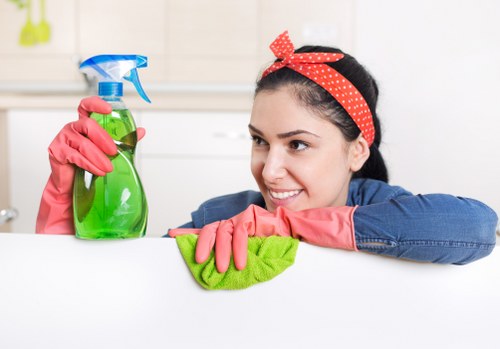
Types of Hard Flooring and Their Cleaning Needs
Hardwood Floors
Hardwood floors are a timeless choice, known for their durability and elegance. However, they require specific cleaning methods to maintain their finish and prevent damage.
Cleaning Tips:
- Use a soft broom or vacuum with a hardwood attachment to remove dust and debris.
- Mop with a damp (not wet) mop using a cleaner specifically designed for hardwood.
- Wipe up spills immediately to prevent water damage and staining.
- Avoid using harsh chemicals that can strip the wood’s finish.
Regularly polishing hardwood floors can enhance their shine and provide an additional layer of protection against scratches and wear.
Tile and Stone Floors
Tile and stone floors are prized for their resilience and variety of styles. They are relatively easy to maintain but require attention to prevent grout deterioration and staining.
Cleaning Tips:
- Sweep or vacuum regularly to remove loose dirt and debris.
- Mop using a pH-neutral cleaner to avoid damaging the grout and stone surfaces.
- Seal grout lines annually to protect against moisture and stains.
- Remove spills promptly to prevent staining, especially with natural stone floors.
Consider using a steam cleaner for a deeper clean, but ensure it’s safe for your specific type of stone to avoid damage.
Laminate and Vinyl Floors
Laminate and vinyl floors are popular for their affordability and ease of maintenance. They mimic the look of natural materials while offering enhanced durability.
Cleaning Tips:
- Sweep or vacuum regularly to prevent scratching from dirt particles.
- Mop with a manufacturer-recommended cleaner; avoid excessive water which can seep into seams.
- Use rugs or mats in high-traffic areas to protect against wear.
- Avoid abrasive cleaners that can dull the finish.
Periodic deep cleaning can help maintain the appearance and longevity of laminate and vinyl floors.
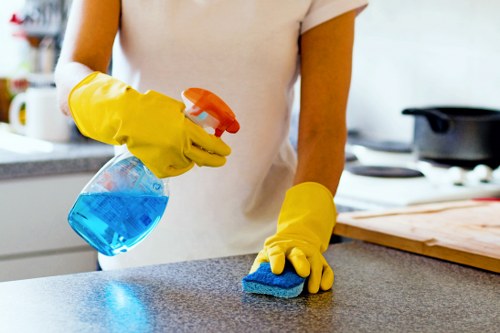
Essential Tools and Products for Hard Floor Cleaning
Having the right tools and products is critical for effective hard floor cleaning. Using appropriate equipment ensures a thorough clean without damaging your floors.
Must-Have Tools:
- Broom or Vacuum: For initial dusting and debris removal. Choose a vacuum with settings for hard floors to prevent scratching.
- Mop: A microfiber mop is ideal for most hard floors. For tile and stone, consider a steam mop for deeper cleaning.
- Bucket: For mixing cleaning solutions and holding water during mopping.
- Cleaning Solutions: Select cleaners that are specifically formulated for your type of flooring to avoid damage.
- Protective Pads: Use felt pads under furniture to prevent scratches and dents.
Investing in quality cleaning tools can make the process more efficient and protect your floors from unnecessary wear and tear.
Recommended Products:
- Wood Floor Cleaners: Products like Bona Hardwood Floor Cleaner are gentle yet effective.
- Tile and Stone Cleaners: Use pH-neutral cleaners to maintain the integrity of grout and stone surfaces.
- Laminate and Vinyl Cleaners: Look for non-abrasive, water-based cleaners suitable for synthetic flooring.
- Microfiber Mops: Brands like O-Cedar and MopBuddy offer versatile options for various floor types.
Having a well-stocked cleaning arsenal ensures you're prepared to tackle any hard floor cleaning task with confidence.
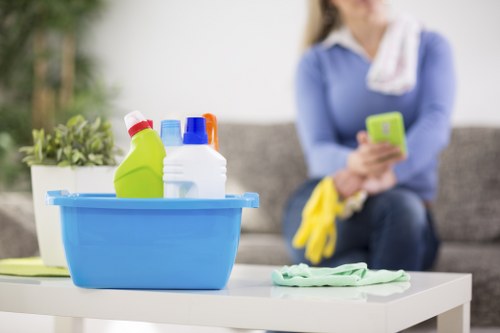
Step-by-Step Guide to Cleaning Different Hard Floors
Cleaning Hardwood Floors
Maintaining hardwood floors requires a gentle approach to preserve their natural beauty and finish. Follow these steps for effective cleaning:
- Remove Dust and Debris: Start by sweeping or vacuuming to eliminate loose particles that can cause scratches.
- Mop with a Damp Cloth: Use a microfiber mop slightly dampened with a hardwood-specific cleaner. Avoid excessive water.
- Dry Immediately: Wipe the floors with a dry cloth to prevent water damage and streaks.
- Polish Regularly: Apply a wood polish monthly to enhance shine and provide additional protection.
By following these steps, your hardwood floors will remain glossy and free from damage.
Cleaning Tile and Stone Floors
Tile and stone floors are durable but require proper maintenance to keep their surfaces intact and grout lines clear.
- Sweep or Vacuum: Remove dirt and debris from the floor surface and grout lines.
- Mop with Suitable Cleaner: Use a pH-neutral cleaner mixed with warm water to mop the floors.
- Address Stains Promptly: Treat any spills or stains immediately to prevent permanent damage.
- Seal the Grout: Apply a grout sealer annually to protect against moisture and stains.
Regular cleaning and maintenance will keep your tile and stone floors looking fresh and prevent long-term damage.
Cleaning Laminate and Vinyl Floors
Laminate and vinyl floors are known for their ease of maintenance. Follow these steps to keep them in top condition:
- Remove Loose Dirt: Sweep or vacuum to eliminate dust and particles that can scratch the surface.
- Mop with Care: Use a damp microfiber mop with a manufacturer-recommended cleaner. Avoid soaking the floor.
- Dry the Floor: Use a dry cloth or mop to remove any remaining moisture.
- Protect High-Traffic Areas: Place rugs or mats in areas with heavy use to reduce wear.
Proper cleaning techniques will ensure your laminate and vinyl floors remain scratch-free and vibrant.

Common Mistakes to Avoid During Hard Floor Cleaning
While cleaning hard floors, certain mistakes can cause more harm than good. Being aware of these pitfalls ensures effective and safe cleaning.
- Using Excessive Water: Over-wetting floors can lead to warping and damage, especially with wood and laminate.
- Harsh Chemicals: Avoid cleaners with harsh chemicals that can strip the floor’s finish or cause discoloration.
- Ignoring Manufacturer’s Instructions: Always follow the recommended cleaning guidelines specific to your floor type.
- Using Abrasive Tools: Scrubbing with abrasive pads or brushes can scratch and dull floors.
- Skipping Regular Maintenance: Neglecting routine cleaning can lead to buildup that is harder to remove later.
By steering clear of these common mistakes, you can maintain the integrity and appearance of your hard floors for years to come.

Maintenance Tips for Long-Lasting Hard Floors
Proper maintenance is key to ensuring the longevity and beauty of your hard floors. Implement these tips as part of your regular spring cleaning routine:
- Regular Sweeping and Dusting: Prevent dirt buildup that can scratch and wear down floor surfaces.
- Use Doormats: Place doormats at entrances to reduce the amount of dirt and moisture tracked indoors.
- Protect from Direct Sunlight: Use curtains or blinds to shield floors from harsh UV rays that can fade colors and damage finishes.
- Control Humidity Levels: Maintain consistent indoor humidity to prevent wood floors from expanding or contracting.
- Promptly Clean Spills: Address spills immediately to avoid stains and damage.
Implementing these maintenance strategies will help keep your hard floors in optimal condition, reducing the need for extensive cleaning and repairs.
Additionally, consider periodic professional cleaning to address deep-seated grime and rejuvenate the floor’s appearance. Professional services can offer specialized treatments that are not easily achievable through DIY methods.

Professional Cleaning Services vs. DIY
When it comes to hard floor cleaning, homeowners often weigh the benefits of professional services against DIY methods. Understanding the advantages and limitations of each can help you make an informed decision.
Professional Cleaning Services:
- Expertise: Professionals have the knowledge and experience to handle various floor types effectively.
- Advanced Equipment: They utilize specialized tools and cleaning agents that can achieve deeper clean results.
- Time-Saving: Hiring experts frees up your time, allowing you to focus on other aspects of spring cleaning.
- Long-Term Preservation: Regular professional maintenance can extend the lifespan of your hard floors.
DIY Cleaning:
- Cost-Effective: DIY methods can be more budget-friendly, especially for routine maintenance.
- Flexibility: You can clean at your own pace and schedule without coordinating with service providers.
- Control Over Products: Choose the cleaning products that best suit your preferences and floor types.
Ultimately, a combination of regular DIY maintenance and periodic professional cleaning can provide the best results, ensuring your hard floors remain beautiful and well-maintained throughout the year.

Final Thoughts on Hard Floor Cleaning in Spring
Spring cleaning is an excellent opportunity to give your hard floors the attention they need. By understanding the specific requirements of different flooring types and using the appropriate tools and techniques, you can achieve a thorough and effective clean.
Remember to avoid common mistakes, follow maintenance tips, and consider professional services when necessary to maintain the integrity and appearance of your hard floors. A well-maintained floor not only enhances the beauty of your home but also contributes to a healthier and more comfortable living environment.
Embrace the season of renewal by dedicating time to hard floor cleaning, and enjoy the lasting benefits of clean, vibrant floors throughout the year.
Ready to transform your home this spring? Contact us today to schedule your professional hard floor cleaning service and ensure your floors are spotless and shining for the season ahead!
